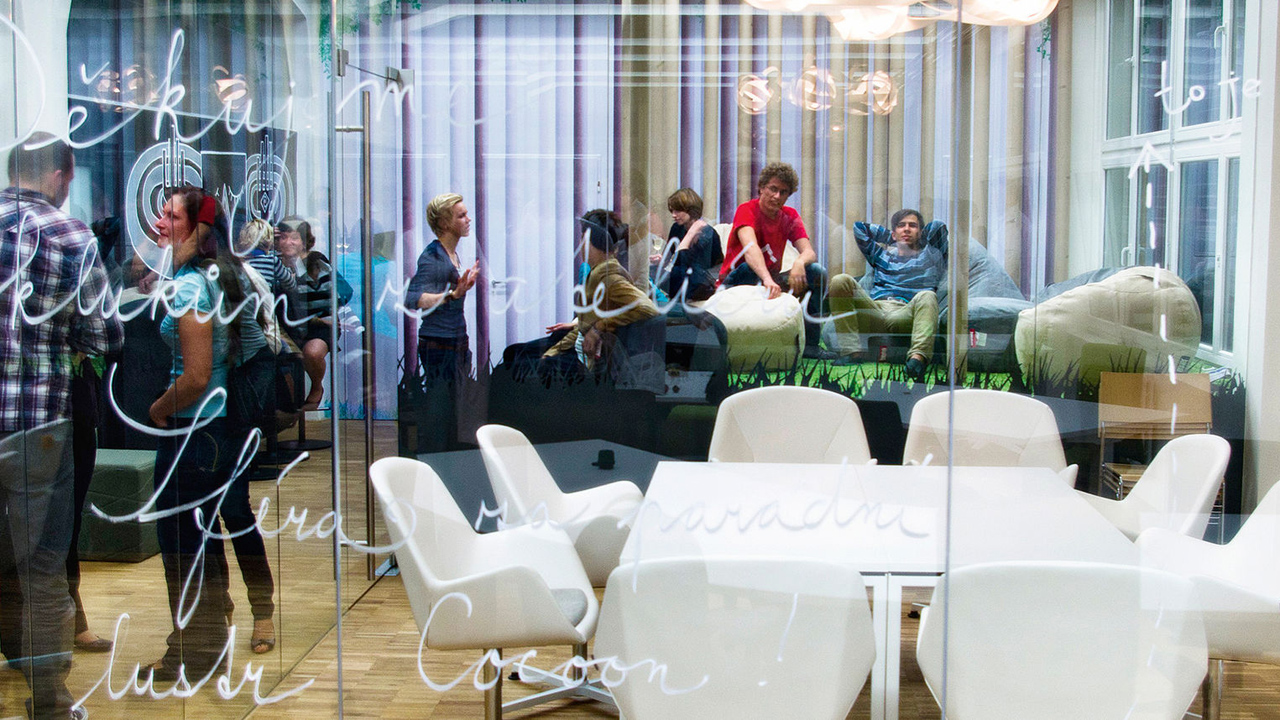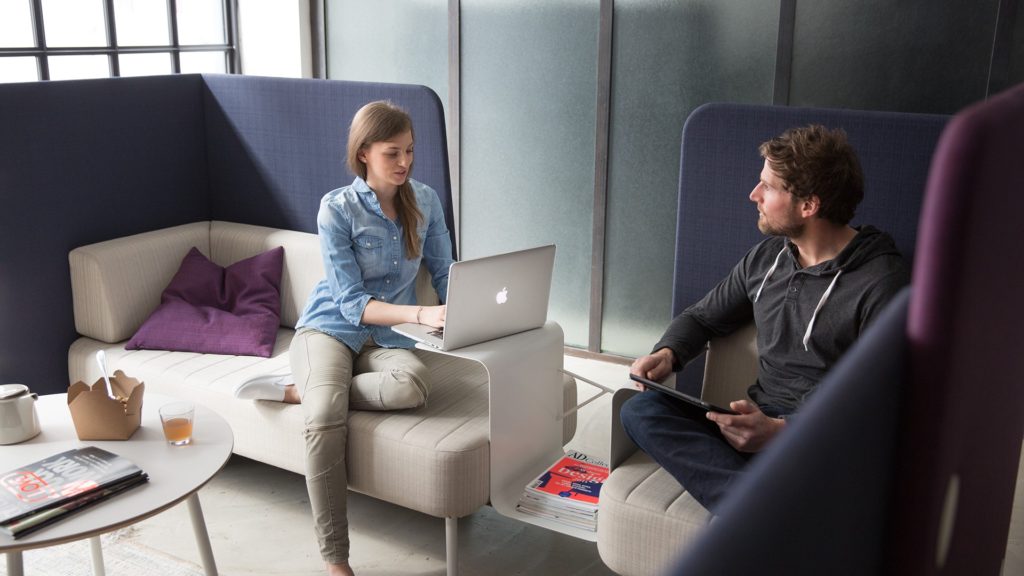Making sure the message gets across: communication rooms in transition
By Franz Gurtner, 23.10.2017

Communication is a success factor and the importance of good communication for the success of a company is an unchallenged fact. We take a close look here into what contribution rooms can make to the improvement of communication quality and we present all the latest trends for the planning of a communication room.
“You simply can’t not communicate” is how Paul Watzlawick hit the nail on the head with his challenging double negative back in 1969. Lecturing, talking, flirting, debating, discussing, quarrelling … it is all communication. It makes no difference even if we try to shroud ourselves in a cloak of silence. We also have the proven fact that 50 % of all our communication is nonverbal, and is in the form of glances, gestures or mimicry. The decisive point for communication is not what wesay, but what makes an impression on other people.
This purpose is determined by the space – the room – where it happens.
Creative communication for the development of ideas – in the form of workshops or project meetings – demands an inspiring environment in which thought can flow freely. A place where it can break out of the traditional desk-bound thinking. In contrast to this approach the environment for classic meetings or conferences that develop from the workflow, is more static and matter of fact, but it still allows for a very broad range of design free-play: from the simple and functional through to the polish of the top quality representational.
The requirements for training and educational rooms on the other hand take an entirely different direction – mobility is the essential here. Those forms of use that see big and frequent changes such as learning sessions, seminars, training, conferences or congresses all demand a multifunctional space concept, where a rapid change of various presentation possibilities is available.
What appearance must a room have if it is to fulfil individual needs? What planning steps must be taken into account?
First of all you need to know exactly what you want and what is important before getting it all down on paper in a concept for use. The precise planning can begin once all of this has been clearly defined, and there are a number of things to take into account when this is done: these range from the technical requirements for the room such as the installations, lighting, darkening the room and the acoustics or the interior design and architecture of the room (as in the choice of materials and colours) through to the choice of suitable media or presentation technologies and equipment.
Current trends: The classic meeting room is running up against competition.

The concept of what a communication room should be like and what it should be able to do has changed enormously over the past few years. Here are five of the most important trends:
- The “Google phenomenon”
The major IT Groups live out their principles and ever more companies are also jumping onto the bandwagon. Google in Zurich or Microsoft in Vienna have cracked wide open the dusty old concepts of what an office should be like. They have established completely new office environments with extravagant communication rooms. Sometimes the meetings are held in a ski gondola, or discussions take place in the cosy living room lounge. These extraordinarily different rooms are not a purpose in themselves, they all serve a higher objective: innovative strength needs and relies on social friction in a creative environment.
- The growing importance of middle zones
While classic workplaces now tend to be reduced and shrinking, middle zones are growing in size and importance as free spaces close to the workplace. They are ever more frequently taking on a central role as a “point of communication”. Because this is the meeting place for finding ideas, of classic business and also privacy (the possibility for withdrawal). From simple seating and standing groups to working cafés or crossways and through to creative lounge zones, no limits are set to individual furnishing ideas. The corporate culture can be felt and experienced in a very lively form in these middle zones – the spirit of the times in an urban work-life-style.
- Mobile Media integration
WLAN links in communications are state of the art in the world today. But the new development being added to these with increasing frequency now is the cableless presentation system. Here networks, beamers or television screens can be controlled directly from mobile end devices such as notebooks or tablets using WLAN technologies. The big advantage here: the saving made on complex and expensive conference room cabling. Presentations can be significantly more interactive, since every participant can join in directly in the beamer or screen presentation. Using what are now already very affordable net-meeting systems (video or Web conferences) it is now very easy to involve external participants in discussions.
- More efficiency through stand-up-meetings
A University of Missouri study showed that discussion groups held standing up needed 34 % less time to reach decisions – while maintaining the same quality standards. Stand-up-meetings of this kind (of between 10 and 20 min. duration) can also be a great change from constant sitting around with a correspondingly positive effect in ergonomic terms as another acknowledged benefit. So it is no surprise that many common and communication areas in companies today are ever more frequently furnished with stand-up tables..
- Multifunctional rooms
One question in particular is always posed when costs are being discussed: how do I avoid unused space gobblers and also future bottlenecks as a result of not having enough communication areas? The answer lies in multifunctional spatial concepts. In the big organisations in particular classical seminar rooms are turning into communication centres, flexible in size (can be partitioned) and allowing virtually every form of communication with their mobile furnishing concepts. From training and education through to events and congresses.




